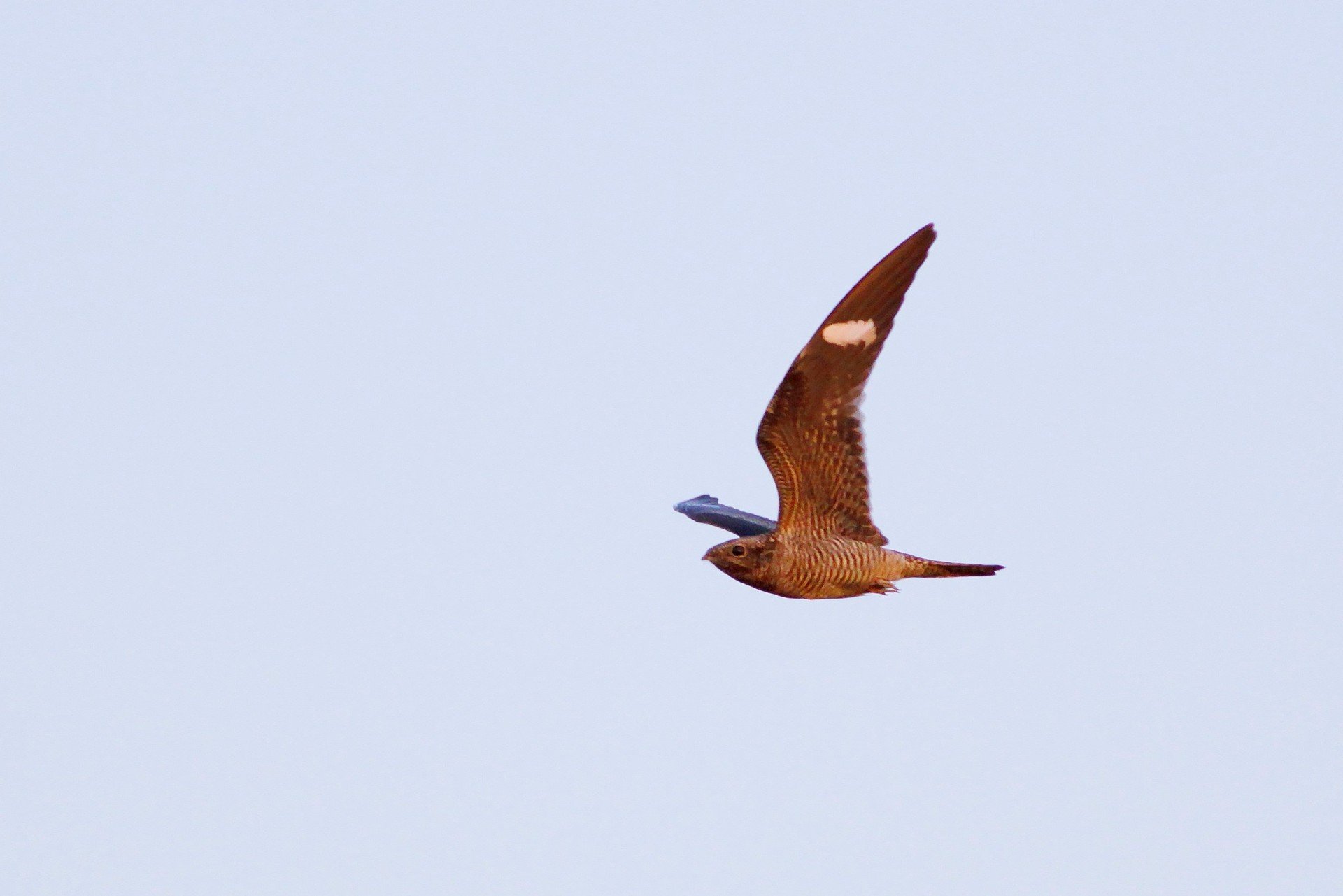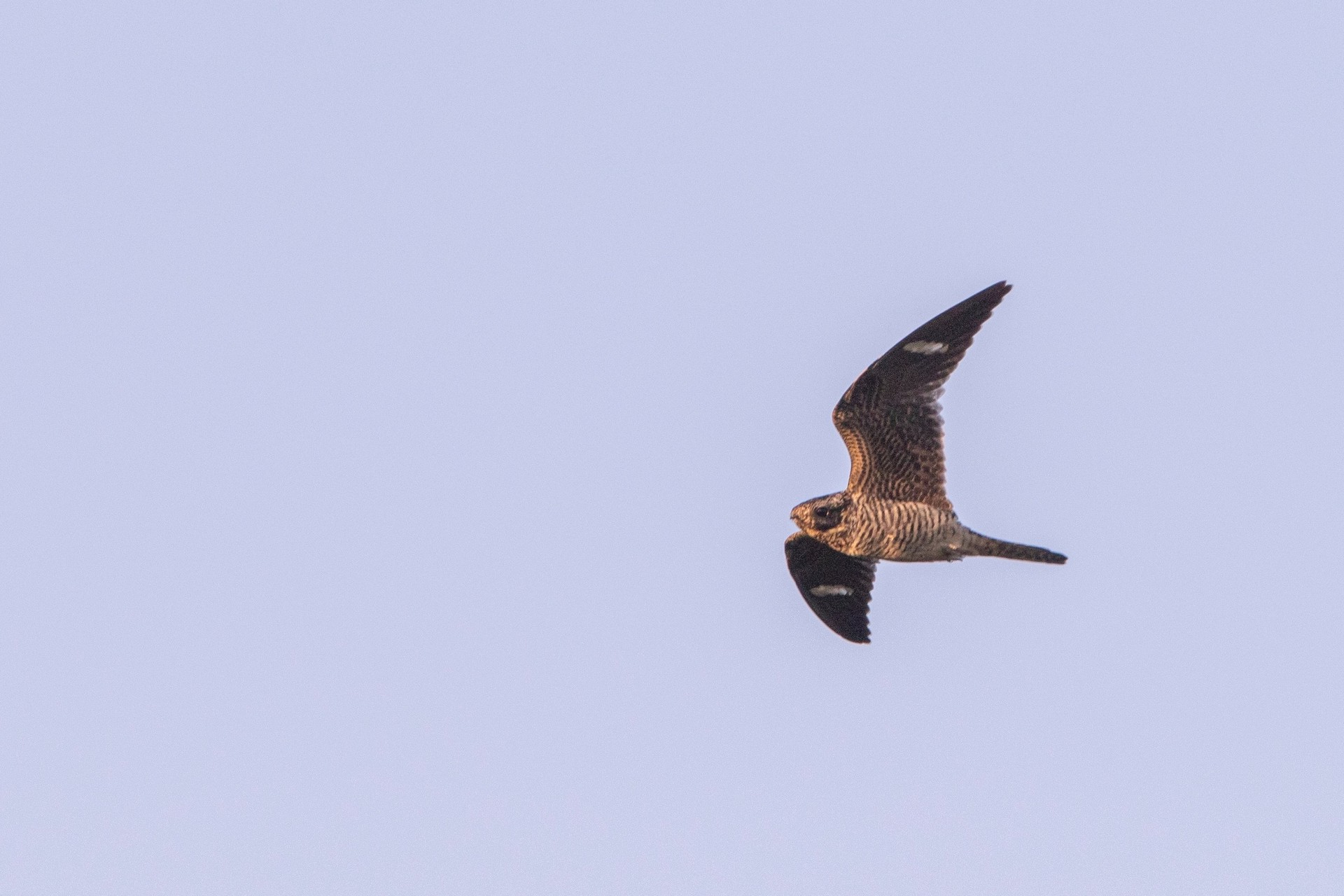Every late summer, the sky over Massachusetts becomes the stage for one of the state’s most captivating natural phenomena: hundreds of migrating Common Nighthawks erratically flapping and swooping over river valleys at dusk. Once familiar summer breeders, these unique dusk fliers have grown rarer—but their spectacle remains unforgettable.
What is the Common Nighthawk?
Are nighthawks hawks? No. Are nighthawks bats? Also no. But they’re often confused for both.
Despite the name, the Common Nighthawk (Chordeiles minor) is neither a hawk nor nocturnal—it belongs to the “nightjar” or “goatsucker” family, closely related to Eastern Whip-poor-wills.
As a crepuscular species, nighthawk activity peaks at dawn and dusk. Birdwatchers call them “bullbats” for both their batlike, acrobatic flight and the loud booming sound males produce during courtship dives.
Their mottled grays and browns provide excellent camouflage while resting on the ground, making them difficult to see. However, in flight, long pointed wings with white wing patches on the underside of the wing and “peent” calls transform them into unmistakable aerial dancers.
Nighthawk Mid-Flight Feeding
With their tiny beaks and cavernous mouths fringed with bristles, nighthawks catch flying insects such as beetles, moths, ants, and grasshoppers mid-flight. They glide and flare in looping, swift-like catches, often forming feeding aggregations over the bright lights at stadiums or marshes during dusk or dawn.
Generations of Boston Red Sox fans have no doubt seen Common Nighthawks flying over Fenway Park during night games, whether they realized it or not. The accumulation of flying insects attracted to the bright stadium lights provide an irresistible lure for hungry nighthawks.
How to Find Common Nighthawks in Massachusetts
By late summer—typically mid-August to September—nighthawks will begin their migration to warmer weather in South America. Hundreds of birds will gather in loose flocks to feed on the wing at sunset, swooping and peenting in a migration spectacle.
Tips for Viewing Common Nighthawk Migration
- Pick the Best Time: Late August through early September, especially during sunset when they gather to feed.
- Find Prime Locations: Seek out large marshlands, open fields, and even urban parks near water or lights. Look in the Connecticut River Valley (including Arcadia Wildlife Sanctuary), surrounding Boston area, North Shore region, and beyond.
- What to Look for: Keep an eye on the horizon 30–45 minutes before to after sunset—scanning for silhouetted birds and white wing flashes. Watch them linger low over ant swarms or floodlit fields.
- What to Listen for: Listen for their iconic nasal “peent” calls.
Ready to chase dusk with the nighthawks? Whether you’re a seasoned birder or simply love seasonal bird phenomena, this is your chance to witness—and help protect—one of Massachusetts’s most intriguing aerial acrobats. Learn more about their story, find a place to explore, or join an expert-guided program in search of the Common Nighthawk.
Stay Connected
Don't miss a beat on all the ways you can get outdoors, celebrate nature, and get involved.




